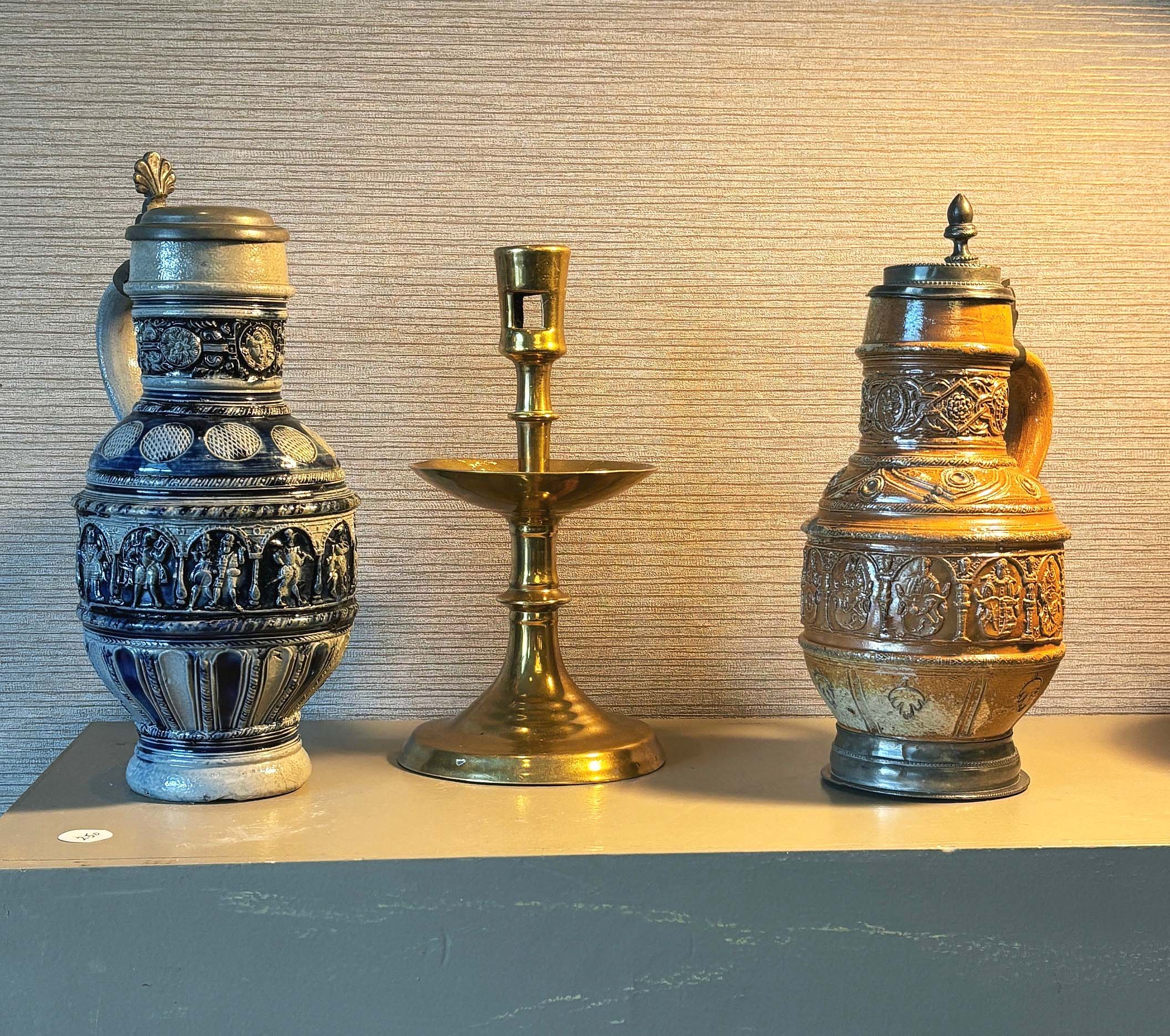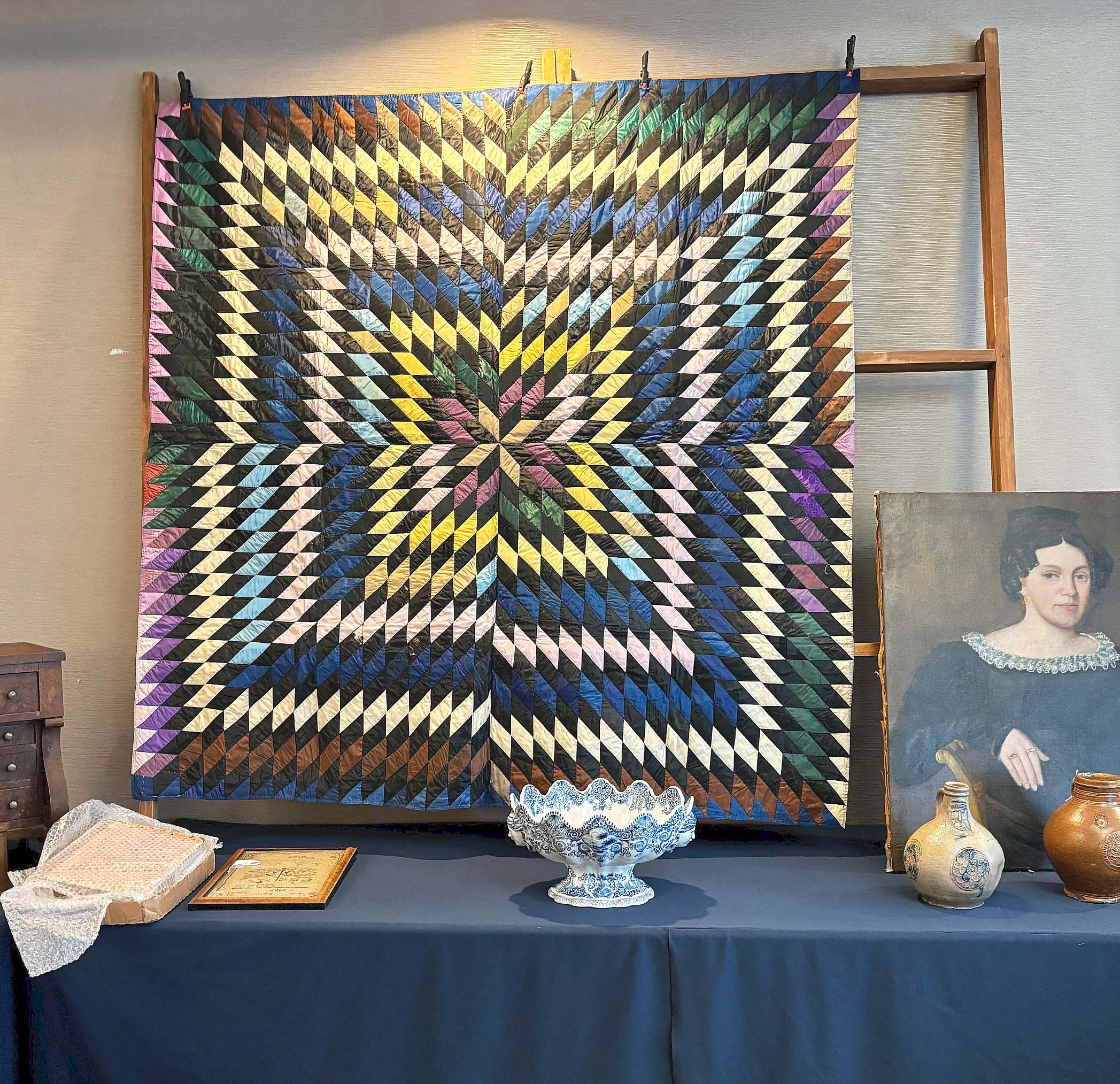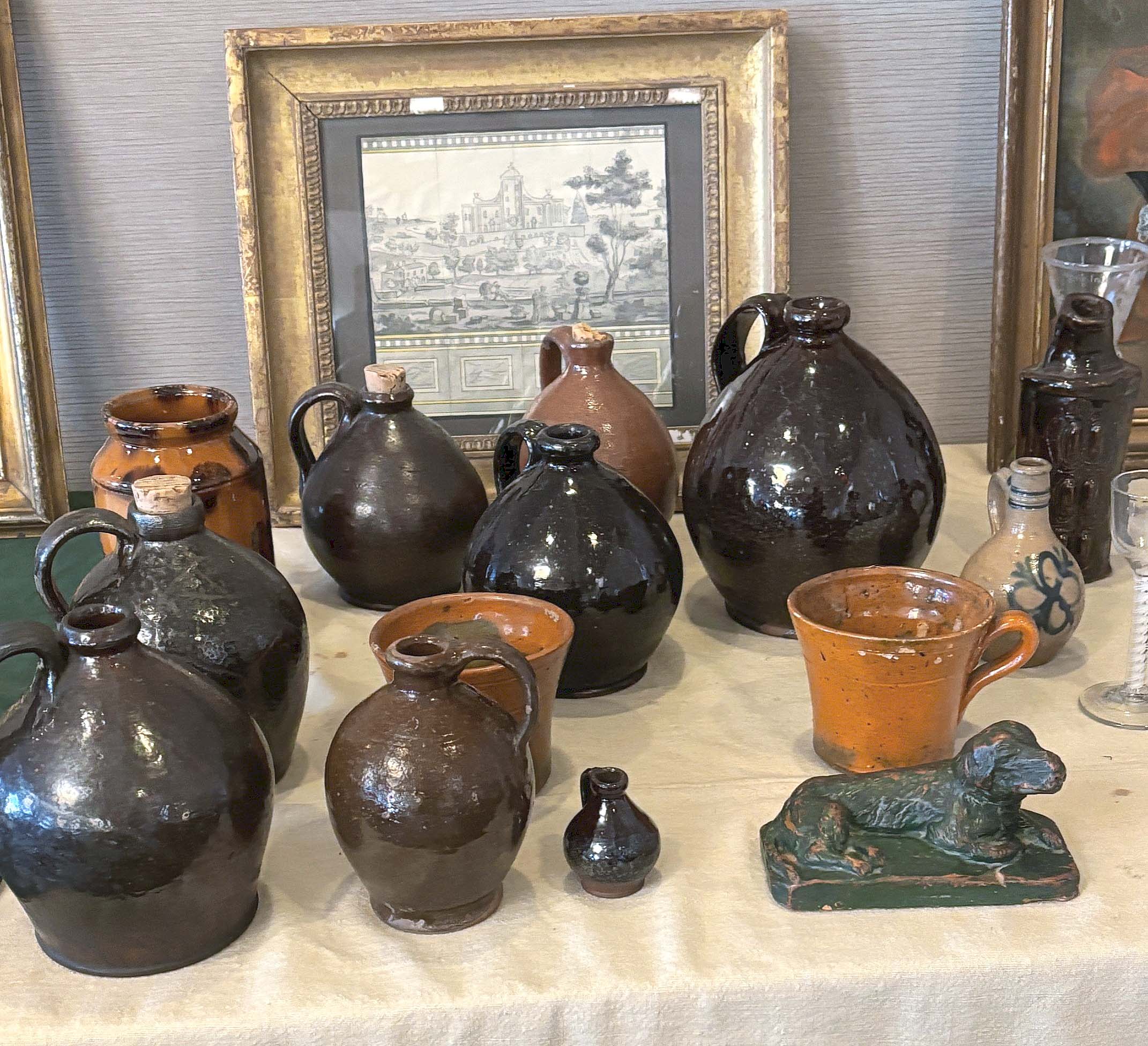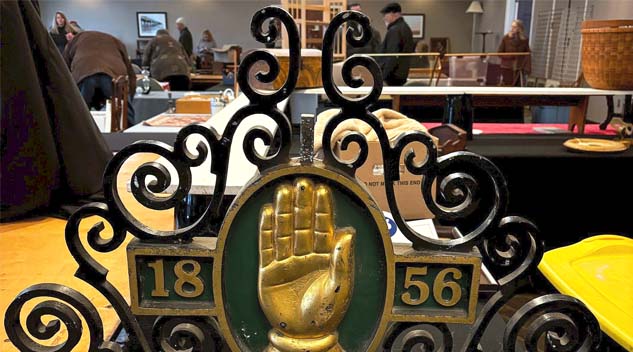#Peter #Mavriss #Hampton #Show #Antiques #Arts #Weekly

Dennis Raleigh and Phyllis Sommer priced this American Odd Fellows brass and iron lodge sign it $2,400. Following the show, Raleigh said, “We have no complaints. We had two very nice sales along with others.” Pumpkin Patch Antiques, Searsport, Maine.
Review & Onsite Photos by Rick Russack
HAMPTON, N.H. — If you’re looking for the ordinary, you can skip Peter Mavris’s Hampton show. But if you’re looking for out-of-the ordinary early antiques, don’t miss it. At his most recent show on January 26, available were a Westerwald tankard dated 1603, Eighteenth Century Boston coin silver porringers, early glass and brass candlesticks, Eighteenth Century English ceramics, early needlework and textiles, exceptional trade signs and more. Some dealers at the January 26 show had early Asian items, redware, stoneware, studio pottery, mocha or slip-decorated ceramics, nautical material and more. And there was also a selection of painted woodenware, a variety of toys, good folk art and more.
Peter Mavris, who runs the event, has been involved with shows for 35 years and believes in keeping it simple. Each year, the shows run once a month during the fall and winter, usually on the last Sunday of the month. The 2024-25 season scheduled eight shows; five have been completed and there are three to go.
The show is one of New England’s best kept secrets. While it is not a large show as far as the number of exhibitors go, the quality of those exhibitors is notable. There was one who has participated at the Winter Antique Show in New York City, and another who had exhibited at the now defunct New York Ceramics Fair. There are several who regularly exhibit at other quality shows along the eastern seaboard. Nearly all exhibitors return show after show, and booth availability is limited; there were only two or three exhibitors at this show who had not done it before. It’s a table-top show, so the booth rental fee is low and the facility — the Best Western hotel — is easy for dealers loading in and out, and overnight accommodations on site are available for those that need them.

Elliott and Grace Snyder had one of the earliest items in the show: the ochre-glazed Westerwald tankard shown on the far right was dated 1603. South Egremont, Mass.
Elliott and Grace Snyder offered the 1603 Westerwald tankard previously mentioned. The South Egremont, Mass., dealers also had others made within a few years of that date, as well as several early candlesticks, including an Islamic brass candlestick, which dated to the Sixteenth Century, and early English pewter.
Many dealers had trade signs. One of them was a colorful example for a barber shop that belonged to Joe Martin of Lyndonville, Vt.; he was asking $4,500 for it. Josh Farrin of Randolph, Maine, had one that was most likely used in a hardware store to show customers the range of drawer pulls, hinges and latches to be used on furniture. It was priced $350.
Two dealers who set up next to each other each had selections of silver. Brian Cullity, Sagamore, Mass., who also offered early Westerwald jugs, had three New England coin silver porringers. One had been made circa 1790 by Robert Evans of Boston and was priced $2,200. Another was also made in Boston by William Simpkins (1704-1780); it was also priced $2,200. A Rhode Island example, made circa 1780-1810, by Benjamin Pitman, was marked $1,850. Pittsford, Vt., dealers Mike and Lucinda Seward were next to Cullity. One of their items was an embossed silver and leather box for which they were asking $225. They also had two cased sets of silver goblets, both made by the International Silver Company in the 1960s or 1970s.; one was a set of six wine goblets, the other included six champagne goblets marked “Lapaglia.” The sets were being sold together and priced $2,900.

Brian Cullity offers early ceramics, early American silver and metal objects. For this show, he also brought a dazzling silk quilt with a handwritten label on the back indicating it had been made in 1866. It showed only minor wear and he priced at $1,400. Sagamore, Mass.
Since the show’s beginnings, one of its strengths has been the breadth and quality of the early ceramics and glass offerings. Ross Levett, Thomaston, Maine, had some early Islamic pottery as well as early glass that included twisted stem wine glasses. An exceptional blown Pittsburgh candlestick that was dated to about 1830-40 was marked $1,400.
Tom Goddard, Acton, Mass., who has a personal collection of more than 600 pieces of mocha ware, had several pieces at the show along with redware. Malcolm Magruder, Millwood, Va., also had several pieces of redware and mocha ware. In addition, he had a circa 1835 English yellowware ram-form flask for which he was asking $3,850. Oliver Garland, Falmouth, Mass., had some Delft and a group of five large examples of circa 1800 peafowl-decorated pearlware; he asked that we not report his prices.
Sam Herrup, Sheffield, Mass., had redware and early English ceramics. The broad selection of ceramics included some mid Twentieth Century studio pottery. Brett Cabral, Salem, N.H., had a Scheier charger and two pieces made by Gerry Williams, one of New Hampshire’s most influential potters. He priced the large Williams charger at $495 while a smaller example was listed at $295.

Malcolm Magruder had these pieces of redware at various prices. Millwood, Va.
In addition to the Sixteenth Century Islamic candlestick mentioned above, there were numerous brass, iron and tin examples (as well as twist-stem wine glasses) from several dealers, some of which came from a very fine collection of early candlesticks from well-known collector Charlie Huntress, which was recently dispersed. There were several pairs of early candlesticks, including a rare paktong — an alloy of copper, nickel and zinc — pair in Ross Levett’s booth. Paktong was first used in China before its use spread to Europe. Most paktong items, including the pair of candlesticks, were made in the late Eighteenth Century. The pair was priced $2,500.
The day after the show, Mavris said, “It was a perfect winter day for a show. I was pleased with the gate. We had the right people and most dealers did well. I had two first-time dealers and both said they want to do the next show. I’m glad they did well. We have three more upcoming shows: February, March and April.”
For additional information, call 207-608-3086 or www.petermavrisantiqueshows.com.




